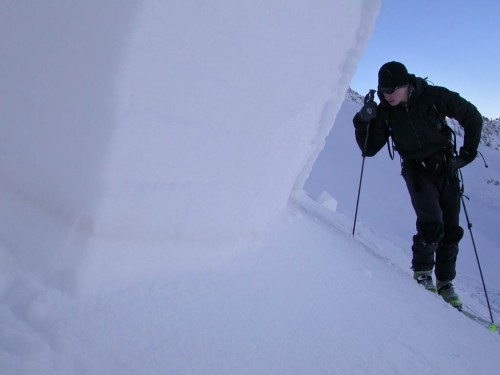Inside Info – Part II
The snowpack is the third major factor and also the trickiest one. Like the weather, its history is more important than its immediate surface conditions. The plot thickens with the snowpack as there are almost always weaknesses in it, but they are difficult to quantify. Snow is the building block of avalanches, but it is these tiny weaknesses between the blocks that actually cause them. Assessing the snowpack is difficult because these paper-thin layers are hard to identify and quantify amidst many feet of snow.

- An avalanche triggered by a very surprised mountain lion in the Wasatch Mountains. No cats were hurt during the making of this photo and the tracks led away from the debris.
Thinking of avalanches in terms of terrain, weather and snowpack simplifies the decision process as you need all or a combination of these elements to have a slide. If the weather and snowpack are unstable, but you are on flat terrain, you won’t have an avalanche. Or, if you are in avalanche terrain, but the weather and snowpack are stable, you probably won’t have an avalanche.
Thinking in terms of this triad also makes it easier to extrapolate decisions when you are unsure of one of the factors. If you are in a) avalanche terrain and know it has been b) storming for the last two days, it’s a safe bet that you will trigger some slides, even if you know nothing about c) the stability of the snowpack.
______________________
For 15% off on a Black Diamond Ascension Skins from Backcountry.com, click the photo below…
Category: 07 Avalanche Avoidance









